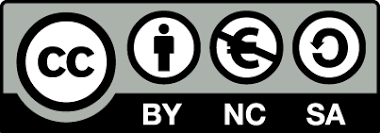Abstract
Formerly, the programs for the elimination of iodine deficiency disorder in Thailand
had used the total goiter rate in school children as an indicator for evaluating the
program. That indicator showed improvement, from 19.3 percent in 1989 to 1.31 percent
in 2003. However, for protection against brain damage from iodine deficiency, importance
must be given to the transfer of thyroid hormones across the placenta even during
early gestation. Thus, the ultimate focus must be women who are going to be pregnant,
pregnant women and neonates. The criteria recommended by WHO/UNICEF/ICCIDD
are salt iodization, proportion of households consuming effectively iodized salt > 90 percent,
median urinary iodine in school age children > 10 μg/dl, thyroid size in school age
children, proportion with enlarged thyroid by ultrasound or palpation < 5 percent and
neonatal TSH, proportion with levels > 5 mU/l whole blood < 3 percent.
The present study took for examination thyroid size and collected blood and urine
specimens for TSH, thyroid function test, urinary iodine in many age groups both from
the hospital and the community in 1998 and 2003. The results showed that the goiter rate
in school age children by ultrasound decreased from 5.1 percent in 1998 to 0.5 percent in
2003, but this proportion was not similar to those identified according to thyroid size by
palpation i.e., 16.1 percent in 1998 and 21.4 percent in 2003. Median urinary iodine in
2003 in the subjects in age groups 0-1 year, 1-3 years, 4-6 years, 6-12 years, pregnant women
and elderly persons were 12.44, 15.49, 15.44, 15.31,11.30, 5.52 μg/dl, respectively. The levels
seemed to decline when compared with the 2003 findings of 19.62, 19.06, 15.83, 46.92,
7.17 μg/dl respectively. Neonatal TSH (serum based) >11.25 μlU/ml in 2003 were 26
percent, which showed that our area was a moderate iodine deficiency disorder area.
This might be caused by unsatisfied coverage with iodized salt at 45 percent.
In this study, most outcome indicators achieved the criteria, but the impact indicator
was unsatisfied in neonatal TSH. Accordingly, a process indicator such as coverage of
salt iodization showed the failure to achieve the criteria. Therefore, Dansai Crown Prince
Hospital would analyze the data in each community and show those data to people in the
community in order to solve this problem. We recommend that every district follow the
multidimensional evaluation of iodine deficiency disorder continuously as process, outcome
and impact indicators.


